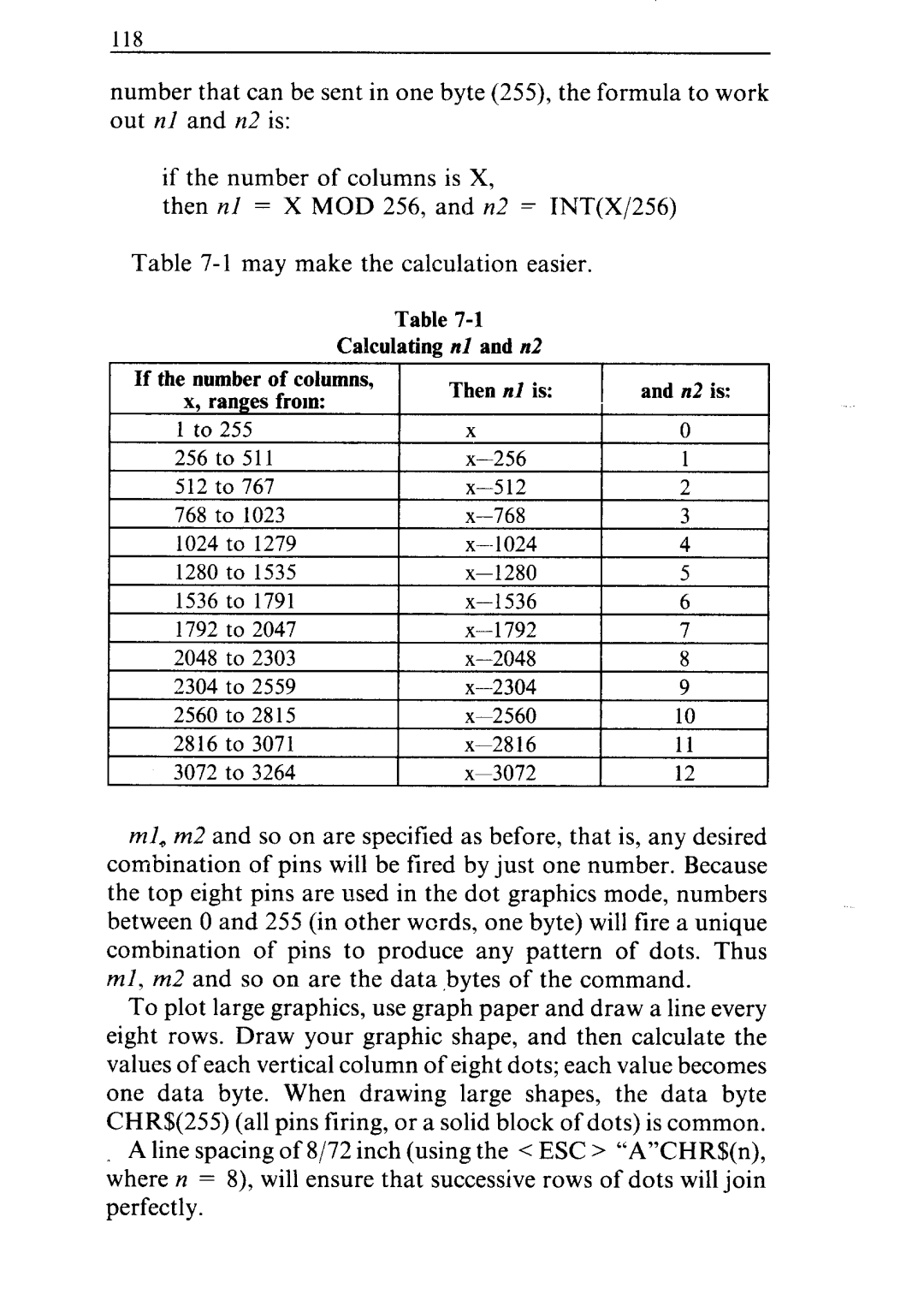
II
118
number that can be sent in one byte (253, the formula to work out nl and n2 is:
if the number of columns is X,
then nl = X MOD 256, and n2 = TNT(X/256)
Table
|
| Table |
|
| ||
|
| Calculating | nl and n2 |
| ||
If the number of columns, | Then | nl is: | and n2 is: | |||
x, ranges from: | ||||||
|
|
| ||||
1 to | 255 | X |
| 0 | ||
256 | to | 511 | 1 | |||
512 | to | 767 | 2 | |||
768 | to | 1023 | 3 | |||
1024 | to | 1279 | 4 | |||
1280 | to | 1535 | 5 | |||
1536 | to | 1791 | 536 | 6 | ||
1792 | to | 2047 | 792 | 7 | ||
2048 | to | 2303 | 8 | |||
2304 | to | 2559 | 9 | |||
2560 | to | 2815 | 10 | |||
2816 | to | 3071 | 11 | |||
3072 | to | 3264 | 12 | |||
ml, m2 and so on are specitied as before, that is, any desired combination of pins will be fired by just one number. Because the top eight pins are used in the dot graphics mode, numbers between 0 and 255 (in other words, one byte) will tire a unique combination of pins to produce any pattern of dots. Thus ml, m2 and so on are the data ,bytes of the command.
To plot large graphics, use graph paper and draw a line every eight rows. Draw your graphic shape, and then calculate the values of each vertical column of eight dots; each value becomes one data byte. When drawing large shapes, the data byte CHR$(255) (all pins tiring, or a solid block of dots) is common.
_ A line spacing of 8/72 inch (using the < ESC > “A”CHR$(n), where n = S), will ensure that successive rows of dots will join perfectly.
